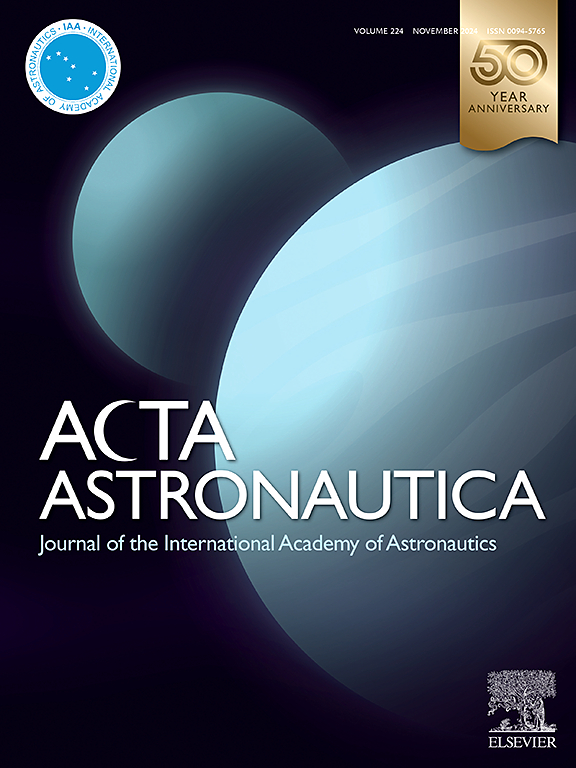Electricity generation for lunar bases during construction and operation: Key technologies, challenges and development roadmap
IF 3.4
2区 物理与天体物理
Q1 ENGINEERING, AEROSPACE
引用次数: 0
Abstract
The lunar base serves as a critical outpost for deep space exploration. Consequently, a safe and reliable energy system is of significance for its construction and operation. The key technologies and challenges related to the research and development of the lunar base electric system need to be clarified, and a preliminary technical roadmap should be outlined in advance. This article examines the evolution of space activity development and the lunar exploration plans of China, the United States, and the European Union. Building on this analysis, it outlines the requirements, major types and key technologies of the electric systems for lunar bases. Lunar exploration can be divided into three stages: uncrewed exploration, crewed lunar landing and lunar base operation, with energy demands escalating from hundreds of watts in the initial stage to hundreds of kilowatts in later stages. The article summarizes the advancements in electricity production technologies, including photovoltaic systems, concentrating solar power, radioisotope thermoelectric generators, space nuclear reactors and thermoelectric generators. It also highlights critical technical challenges that must be addressed such as prolonged periods of daylight and darkness, extreme temperature conditions on the lunar surface, etc. A technical roadmap for the development of electricity generation technologies is proposed to support the evolution of lunar bases. As energy demands may eventually reach gigawatt levels, the integrated energy system will have to rely on diversified power generation equipment and supporting facilities to ensure their operation and development.
月球基地建设与运行中的发电:关键技术、挑战与发展路线图
月球基地是深空探测的重要前哨。因此,安全可靠的能源系统对其建设和运行具有重要意义。明确月球基地电力系统研发的关键技术和挑战,提前勾画初步技术路线图。本文考察了空间活动发展的演变和中国、美国和欧盟的月球探测计划。在此基础上,提出了月球基地电力系统的要求、主要类型和关键技术。月球探测可分为无人探测、载人登月和月球基地运行三个阶段,能源需求从初期的数百瓦逐步升级到后期的数百千瓦。本文综述了光伏发电系统、聚光太阳能发电、放射性同位素热电发生器、空间核反应堆和热电发生器等发电技术的进展。它还强调了必须解决的关键技术挑战,如长时间的白天和黑暗,月球表面的极端温度条件等。提出了支持月球基地发展的发电技术发展路线图。由于能源需求最终可能达到千兆瓦级,综合能源系统将不得不依靠多样化的发电设备和配套设施来确保其运行和发展。
本文章由计算机程序翻译,如有差异,请以英文原文为准。
求助全文
约1分钟内获得全文
求助全文
来源期刊

Acta Astronautica
工程技术-工程:宇航
CiteScore
7.20
自引率
22.90%
发文量
599
审稿时长
53 days
期刊介绍:
Acta Astronautica is sponsored by the International Academy of Astronautics. Content is based on original contributions in all fields of basic, engineering, life and social space sciences and of space technology related to:
The peaceful scientific exploration of space,
Its exploitation for human welfare and progress,
Conception, design, development and operation of space-borne and Earth-based systems,
In addition to regular issues, the journal publishes selected proceedings of the annual International Astronautical Congress (IAC), transactions of the IAA and special issues on topics of current interest, such as microgravity, space station technology, geostationary orbits, and space economics. Other subject areas include satellite technology, space transportation and communications, space energy, power and propulsion, astrodynamics, extraterrestrial intelligence and Earth observations.
 求助内容:
求助内容: 应助结果提醒方式:
应助结果提醒方式:


